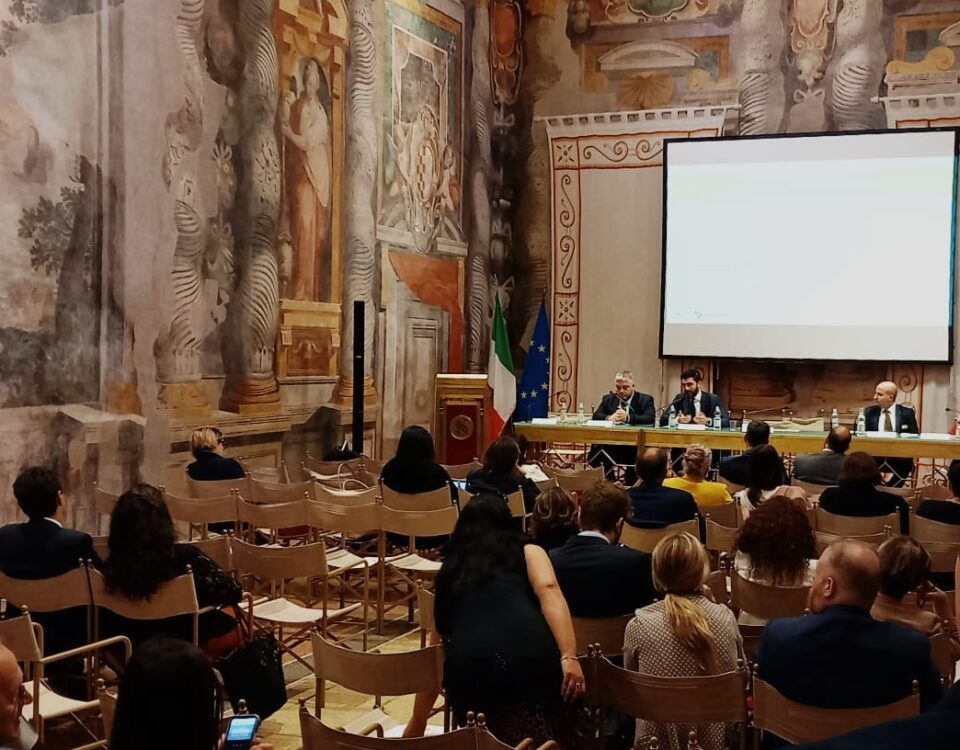Federal health minister says he will meet with father of dying Alberta boy
1 Maggio 2005Mayo Clinic first to use pharmacogenomics to treat inherited kidney disorder of children
4 Maggio 2005The Age of Autism: A new approach
“WASHINGTON, Apr 28, 2005 (United Press International via COMTEX) — Part 2 of 2. Dr. Elizabeth Mumper, a pediatrician in Lynchburg, Va., is concerned that the increasing number of childhood vaccinations in the 1990s may have triggered a huge increase in autism and other developmental disorders. This article looks at treatment strategies she and others are trying based on that view.
Mumper has just been named top adviser on autism treatment for Defeat Autism Now! (DAN!) and is medical director of their physician training lecture series. Mumper graduated from the Medical College of Virginia and completed her residency at the University of Virginia.
This weekend, at a conference in Charlottesville, she and other doctors and scientists who advocate this approach will outline their strategies for treating autism as a biomedical disorder.
Mainstream medical and scientific groups say autism is primarily a genetic disorder and there is no link between vaccines and autism or other mental or physical problems.
Q. Give us a sense of your overall philosophy in treating autistic children.
A. The basic premise of our treatment strategy is to tailor our treatments to the unique constellation of the child’s problems, as determined by history, careful physical exam and targeted laboratory evaluations. Certain treatments are helpful to some children, but would not be expected to help other autistic children with different problems.
Many autistic patients have significant gastrointestinal pathology, which can be well characterized by endoscopy and pathology. Standard treatments targeted at their esophagitis, gastritis or inflammatory bowel disease often lead to improvements in self-abusive behaviors such as head banging, which we believe are frequently signs of physical pain in children who cannot communicate their distress.
Many patients who have major sleep problems begin sleeping through the night when their erosive esophagitis is treated with classic medications.
Many patients who had unexplained crying or sudden meltdowns become calmer when their inflammatory bowel disease is treated with standard anti-inflammatory medications.
Q. What about the neurological problems that are clearly a central feature of autism?
A. Many autistic children demonstrate abnormalities in methylation pathways. Methylation is the biochemical process of adding a carbon (atom) and 3 hydrogens, and is crucial for the formation of new DNA, the synthesis of neurotransmitters and the creation of phospholipid cellular membranes.
Careful study of the individual child’s cellular biochemistry can lead to treatments with methylcobalamin and folinic acid, which have been demonstrated to correct deficiencies in reduced glutathione, which is the major intracellular anti-oxidant.
Glutathione also has vital roles in immune function, gut structure and detoxification. Correcting this biochemistry makes the child healthier and often improves language acquisition and socialization.
Q. You believe that part of what’s going on here is that some children have a genetic or metabolic deficiency in methylation and glutathione pathways that make it harder to excrete heavy metals — like the mercury that was used as a preservative in many childhood vaccines through the 1990s. How does that figure in to your treatment plan?
A. Many children in the autism spectrum have problems with sulfation pathways and detoxification systems. Therapeutic strategies aimed at enhancing the body’s mechanisms for eliminating environmental toxins are associated with a decrease in so-called autistic behaviors in some children.
Our patients frequently have evidence of significant oxidative stress, which can be treated effectively with relatively simple therapies, such as vitamins A, C, and E and selenium.
Q. How many patients have you treated this way in your practice?
A. We estimate that there are about 800 patients with neurodevelopmental disabilities in our practice who have been treated with some combination of biomedical treatments. We try to look for underlying medical problems that are amenable to treatment, so that the child will be healthier and more attentive for (his or her) educational and behavioral therapies. We believe strongly in working as a team with educators and therapists.
Q. How well is this working, in your opinion?
A. There are some patients that we have not really helped much, despite our best efforts. There are other patients whose parents describe extraordinary improvements in language, behavior and socialization. Sometimes it is as if a light bulb has been turned on.
One of the most gratifying moments of my career was when a 6-year-old non-verbal girl said “Mama” for the first time several months after we began working on correcting her biochemical abnormalities. I will never forget the look on that mother’s face when she thanked me. Of course, I cannot prove she would not have spontaneously said “Mama” in the absence of our interventions.
Another gratifying moment came when a 15-year-old boy, who had not slept through the night for four years, began sleeping all night within one week of having his erosive esophagitis identified by endoscopy and treated with standard medications. He must have been in agony. His mother had been chronically exhausted.
He is nonverbal, but just this morning typed to me on his Alpha Smart (portable word processor) in complete sentences how much better he has felt since he started coming to our practice.
Q. The counter-argument to this is that some autistic children improve anyway, that their disorders might not have been as severe as originally believed, or that behavioral treatments going on at the same time really made the difference. How do you respond to that?
A. We are very aware of the potential for bias in detecting improvements — or the lack thereof — when parents or healthcare providers are the only ones assessing the child.
We try to keep teachers, therapists and second-degree relatives “blinded” to the fact that biomedical interventions are being added. We ask the parents to record any spontaneous comments that are made, and frequently get comments that suggest significant improvements in language or behavior over baseline.
We also compare the developmental trajectory at baseline and after biomedical interventions. For example, a child in speech therapy may have made four months’ worth of progress in 18 months prior to our interventions, then 10 months of progress in the three months after our treatments, which suggests — but does not prove — effectiveness.
This morning I saw a 3-year-old patient with autism who started on methylcobalamin and folinic acid 12 weeks ago. At baseline he had about 50 words. He added 100 new words the first six weeks and 50 more words the next six weeks. That seems to be a significant improvement over baseline and is documented with a specific list of words recorded by his therapist.
There is a 140-question assessment tool we use to evaluate the effects of our methylcobalamin and folinic acid regimen. It utilizes data from observers blinded to the intervention. The MIND Institute at the University of California at Davis is carrying out a double-blind, placebo-controlled trial of the protocol, which will utilize sophisticated psychological and educational testing before and after.
I am working with some colleagues who are carrying out multiple-blinded behavioral and educational assessments at baseline and after biomedical interventions, such that each child establishes his or her own developmental trajectory and changes can be tracked by therapists unaware of the medical interventions.
Q. What do your fellow pediatricians think of all this?
A. Most of my pediatric colleagues have accepted the conclusions of the IOM and honestly think the case is closed on the issue of the vaccine-autism link. (An Institute of Medicine panel concluded last year the epidemiology favors rejecting any link between autism and the mercury in vaccines or the vaccines themselves.)
I am concerned that some of my colleagues think I have lost my mind.
Q. So, what are you basing your theories on?
A. My conclusions about the science implicating vaccines came after reading over 50 books, including some very technical ones about neuropsychopharmacology, biochemistry and immunology.
My interest in these subjects was piqued when I was asked to write a book chapter about developmental pediatrics, which includes autism and ADHD, and another chapter about allergy and immunology. Since then, I have read hundreds of articles in peer-reviewed scientific literature about those topics.
I have a paradigm in my mind where much of the science fits together in ways that make the vaccine-autism link quite plausible — although clearly not the only factor in autism.
My husband, Mike, is a psychiatrist. He has a theory that pediatricians are, as a group, such nice people committed to helping children that the thought that we may have unintentionally harmed a generation of children is too painful to face.
—
This ongoing series on the roots and rise of autism aims to be interactive with readers and will take note of comment, criticism and suggestions. E-mail: dolmsted@upi.com
“




